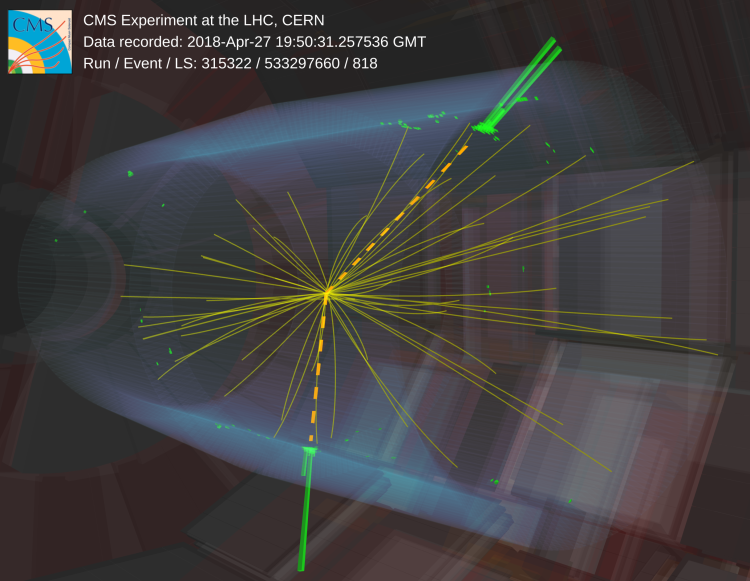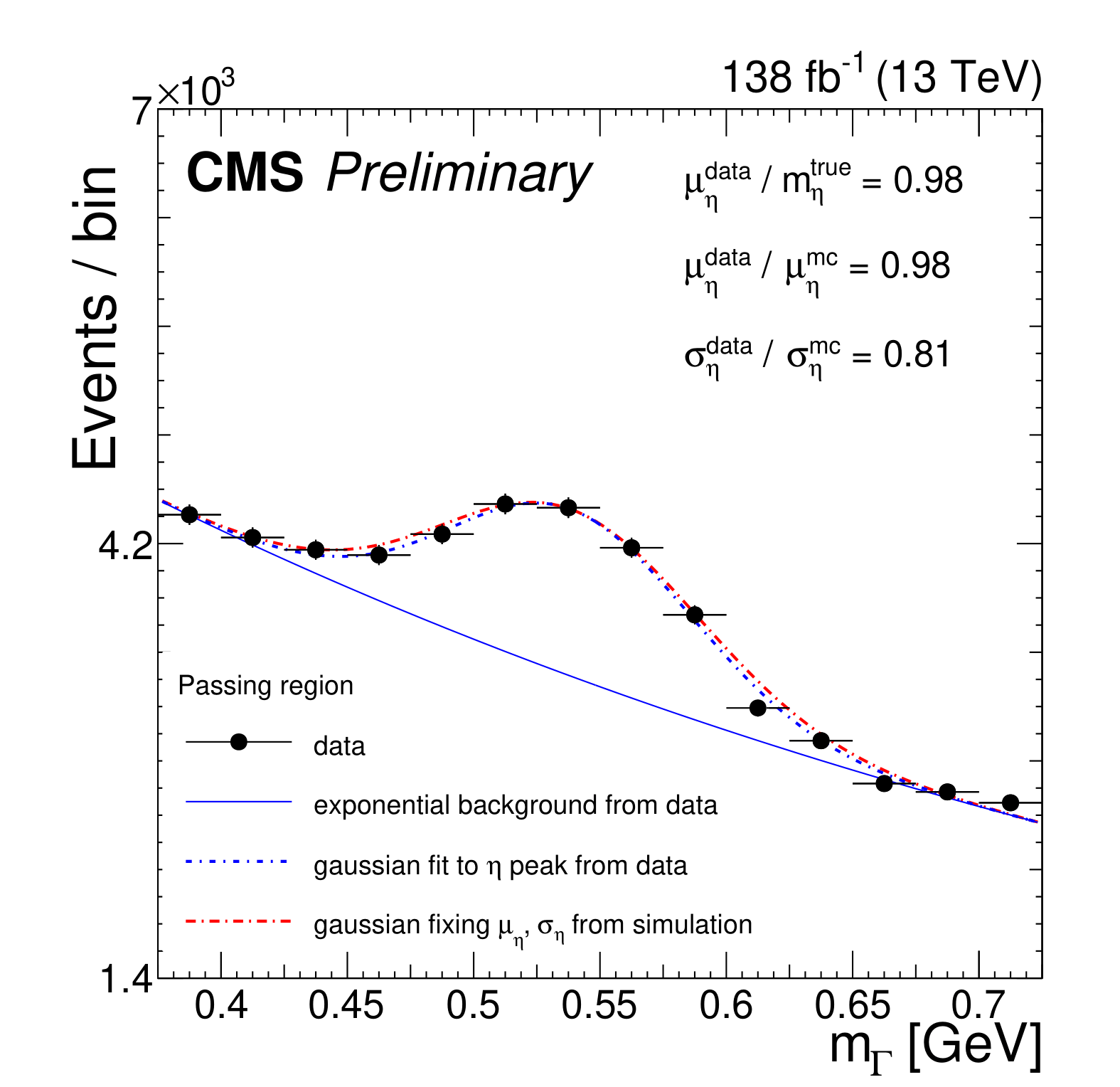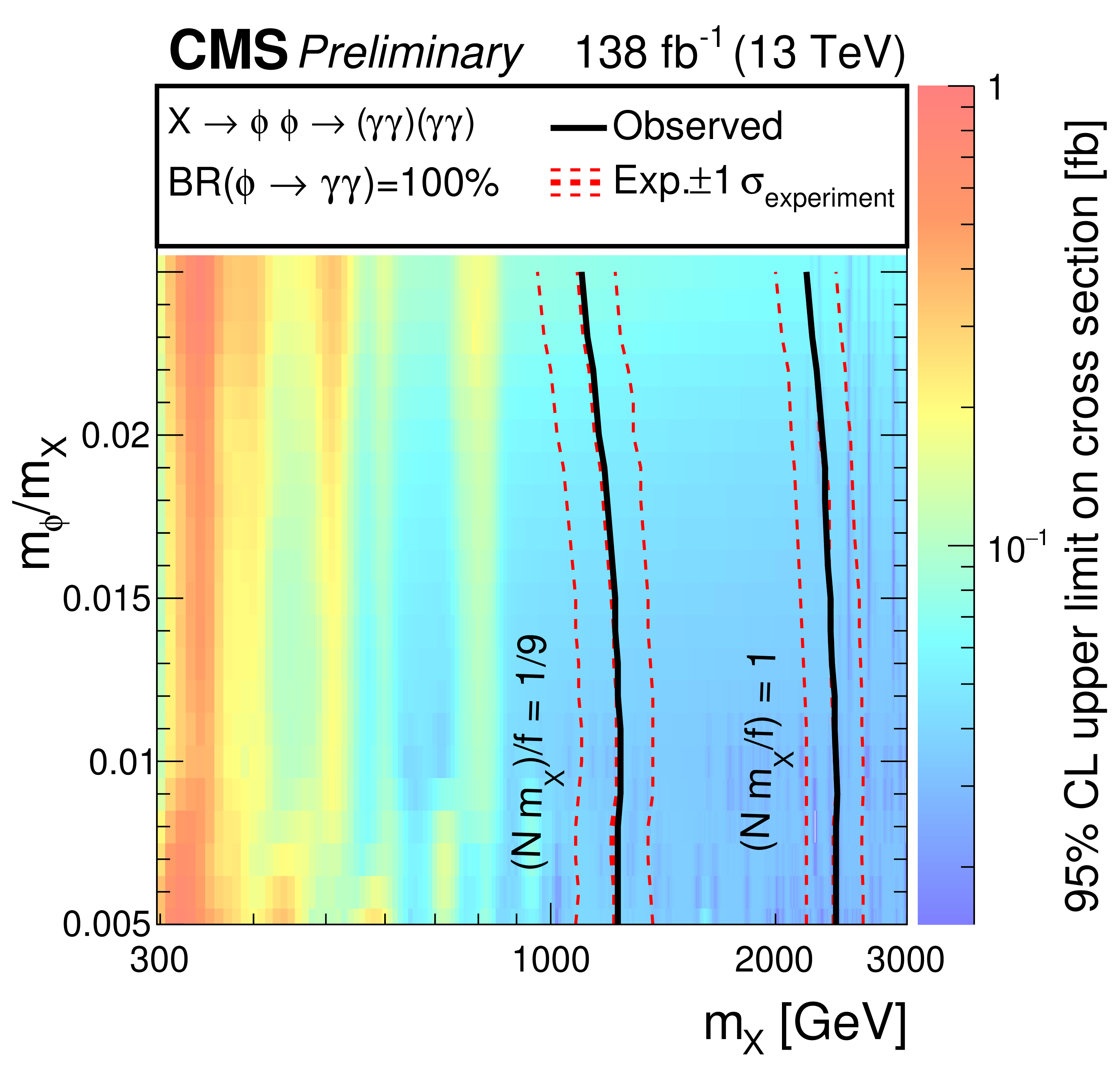
The main goal of the LHC physics programme is to deeply understand the fundamental principles of particles and their interactions. As part of this quest, physicists are searching for evidence of new particles, which would potentially confirm the existence of physics beyond the Standard Model (SM). It is hard to guess the exact form that any beyond-the-SM physics will take, but many theories postulate the need for additional partner particles to the Higgs boson of the SM. These partners would behave similarly to the SM Higgs boson, for example in terms of their “spin”, but would have a different mass.

Figure 1: Diagram showing two gluons (from the proton collisions) interacting to produce a hypothetical heavy partner particle (X) of the Higgs boson, that decays to two light Higgs-like particles (φ), which further decay to two photons. Sophisticated AI methods are used to identify and reconstruct the events where highly-energetic photons overlap with each other in the detector.
A common signature of such new particles is shown in Figure 1, where X is a heavy partner and φ is a lighter one, both coupling (i.e., interacting with other particles) similarly to the Higgs boson. Specifically, φ is shown here to decay to two photons, a decay channel similar to one of those used in the Higgs boson discovery. An advantage to specifically exploring decays with photons in the final state is that photons provide a “clean” signature: they only interact with the electromagnetic calorimeter, producing well-understood electromagnetic showers and with an excellent measurement resolution. This makes final states with photons an ideal way to search for new particles of unknown mass.
The kinematic region corresponding to the case where the X mass is very large and the φ mass is small has not yet been explored in detail and is thus generally considered as an interesting region to focus the search. Moreover, when the φ is very light, the two photons (the φ decay products) will significantly overlap with each other and the tools usually applied for the photon identification fall apart. Although this makes the resulting signature really hard to describe analytically, it is a perfect problem to be solved by an artificial intelligence (AI) method! In fact, such AI methodologies have been used to look for “exotic” decays of the Higgs boson, and are quickly becoming useful and powerful tools in particle physics. It is well known that machine learning computer vision techniques can differentiate between many faces. We apply similar tools to train two AI algorithms, to distinguish the overlapping pairs of photons from noise, as well as to precisely determine the mass of the particle from which they originated, as illustrated in Figure 2.

Figure 2: A CMS event with collimated pairs of photons. Machine learning computer vision techniques are used to distinguish overlapping diphotons from noise, as well as to measure the mass of the parent particle. The large image on the left shows a “standard” CMS event display, where the large deposits of energy in the electromagnetic calorimeter are shown as red towers. The images on the right show the output clusters of the computer vision algorithm corresponding to two merged diphotons in a single image; each pixel in the images represents one crystal of the electromagnetic calorimeter.
The next question is how do we know that the AIs are working? In the case of faces, we can simply look at them to check; things are not so easy when it comes to a particle physics analysis. Thankfully, the SM has well-understood processes, which we can use to validate and control the AI techniques. For example, the η meson, which also decays to two photons, provides an ideal test bench. As shown in Figure 3, we are able to cleanly identify and reconstruct the η meson when we apply these AI techniques to search for η→γγ decays in the CMS events where the two photons overlap (the η meson had not been previously observed in such events)! This gives us great confidence that computer vision techniques can, indeed, be applied to search for (and potentially discover) new particles.

Figure 3:Sophisticated computer vision AI techniques are used to identify and reconstruct the η meson, when it decays to two photons that are energetic enough such that they overlap in the detector. The mass of the resulting object agrees perfectly with the known η mass, showing that such machine learning methods can be confidently applied to search for new particles of unknown mass.
The search for the X and φ partners of the Higgs boson has been performed using the hypothetical process X→φφ, with both φ decaying to collimated photon pairs, using computer vision techniques; a wide range of masses has been explored. No evidence for such new particles has been seen in this analysis and, hence, we set upper limits on the production rate of this process, as a function of the X and φ masses. The result, shown in Figure 4, is more sensitive than all previous searches for such particles.

Figure 4: Observed upper limits, at 95% confidence level, of the X→φφ→(γγ)(γγ) production rate, as a function of the X and φ masses. The lines indicate the region in the 2-dimensional mass space that is excluded by the search, for two different theoretical assumptions.
This analysis clearly shows that AI algorithms can be used to cleanly identify merged two-photon signatures from the noise and to search for new massive particles. These machine learning techniques are continuously improving and will surely continue to be used in unique analyses of LHC data, extending our searches to even more challenging cases. As the LHC collects more data in Run 3, one thing is clear: the future of such computer vision techniques applied to collimated diphotons is bright!
Read more about these results:
-
CMS Physics Analysis Summary (EXO-22-022): " Search for new resonances decaying to pairs of highly merged diphotons in proton-proton collisions at 13 TeV "
-
Display of collision events: CERN CDS
-
@CMSExperiment on social media: LinkedIn - facebook - twitter - instagram
- Do you like these briefings and want to get an email notification when there is a new one? Subscribe here

